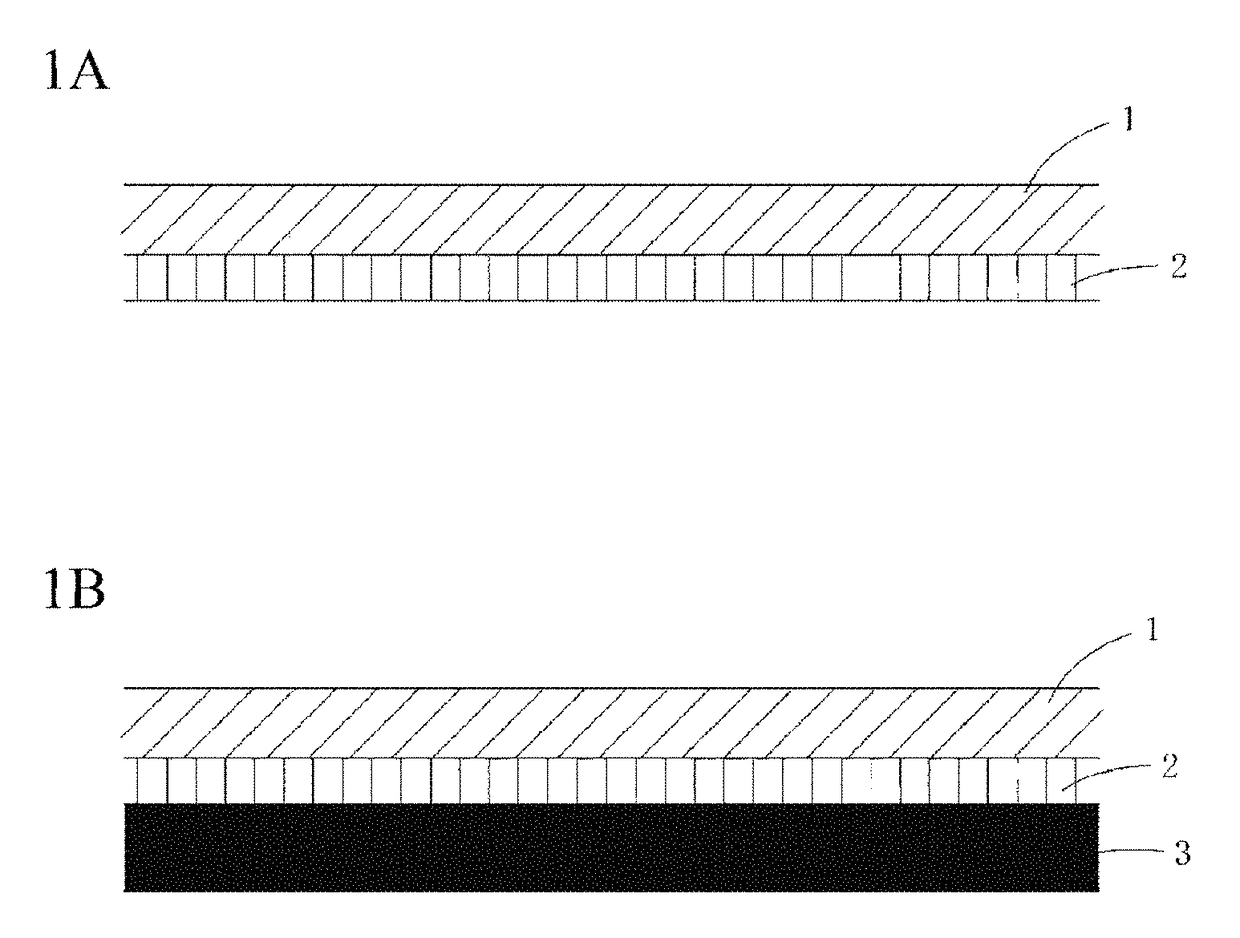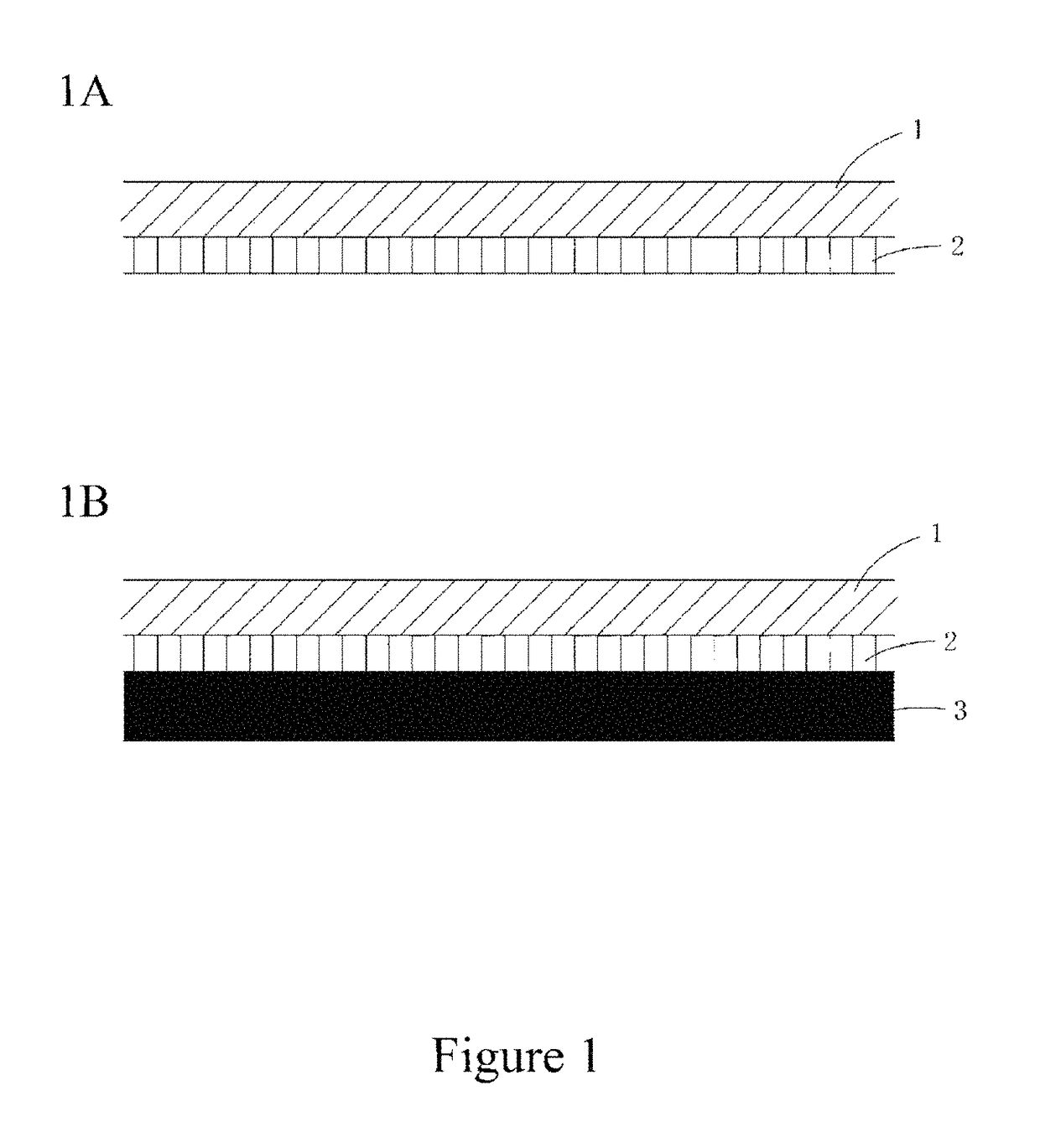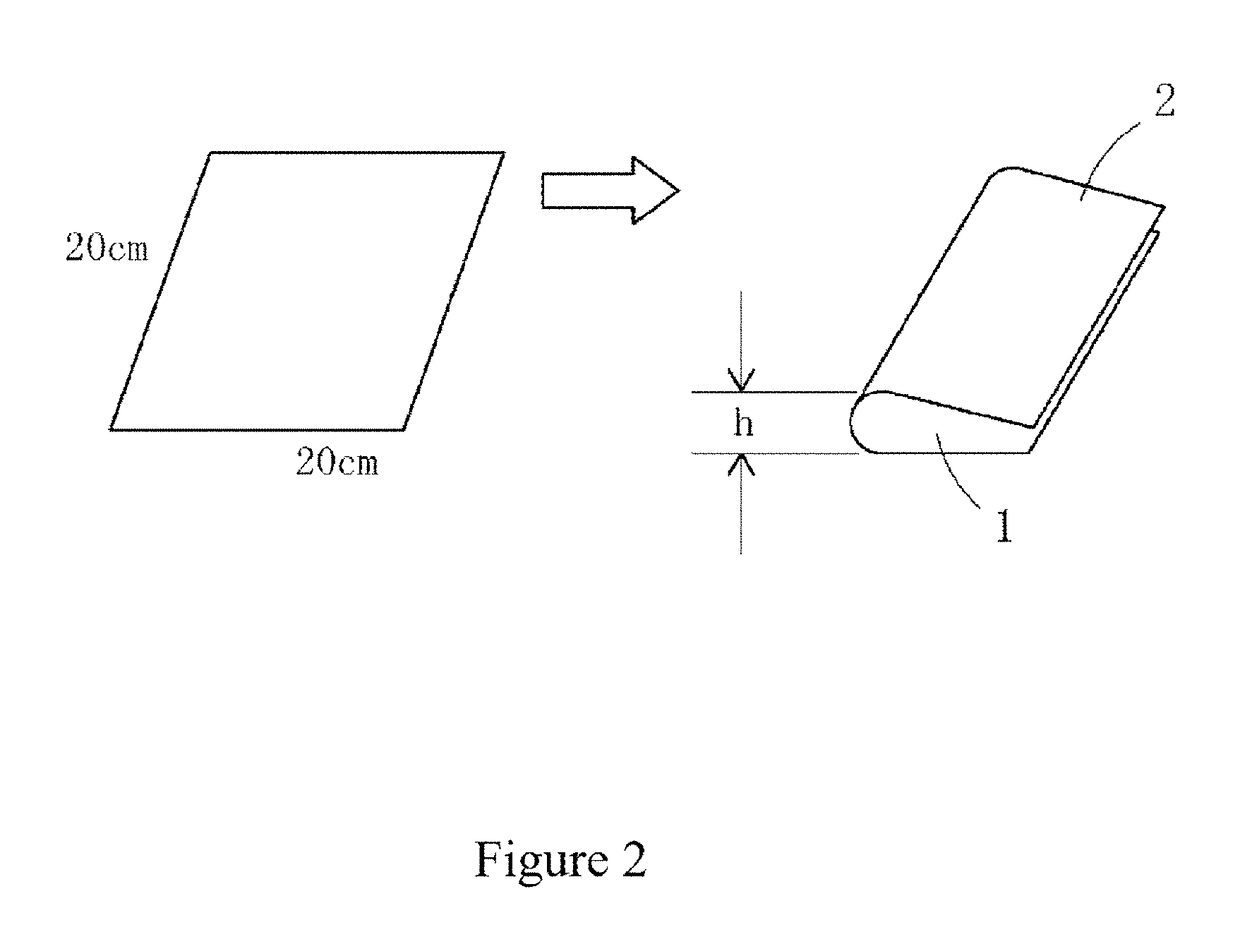Method for manufacturing fabric
a fabric and manufacturing method technology, applied in the field of manufacturing fabrics with flame retardancy and stain resistance, can solve the problems of affecting the texture of the fabric, affecting the stain resistance, and affecting the water-and-oil repellency against liquids having a temperature around 80° c., and achieves excellent texture, high flame retardancy, and stain resistance.
- Summary
- Abstract
- Description
- Claims
- Application Information
AI Technical Summary
Benefits of technology
Problems solved by technology
Method used
Image
Examples
example 1
[0062]A polyester fabric (polyester: 100%, basis weight: 360 g / m2) was treated according to the steps shown in Table 1.
[0063]Regarding the steps of Table 1, for the dyeing treatment (step 1), 0.84% owf (in terms of solid content) of a phosphoric acid amide flame retardant commercially available under the trade name of VIGOL FV-6010 from Daikyo Chemical Co., Ltd. was added together with a black disperse dye (added so as to have about 9.8% owf in terms of solid content), and in-bath flame retardant processing was carried out simultaneously with dyeing.
[0064]For the stain-resistant finish (step 4) by dip-nip process, a mixture of a fluorine-based water-and-oil repellent agent commercially available under the trade name of AsahiGuard E-SERIES from Asahi Glass Co., Ltd. and a fluorine-based water-and-oil repellent agent commercially available under the trade name of NK GUARD S series from Nicca Chemical Co., Ltd. was used as a first fluorine-based water-and-oil repellent agent, and the p...
example 2
[0092]In order to determine the influence of the cleaning of steps 6 and 11 on the texture of the fabric, the following experiments were carried out.
[0093]Each of the blank fabric, fabrics Nos. 1, 2, 4, and 5 was cut into a size of 20 cm×20 cm, the cut sample was vertically and horizontally folded in half with its rear surface (the coating layer formed side) facing outside, and the height h (mm) of the sample was measured (see FIG. 2). A small value of the folded height h means that the fabric was soft and had good texture, and the larger the value, the harder the fabric becomes and the worse the texture. The measurement results are shown in Table 3.
[0094]
TABLE 3Results of evaluation test on textureBlankNo. 1No. 2No. 4No. 5Folded heightVertical1.202.201.832.322.20(h mm)Horizontal1.502.432.522.562.15Average1.352.322.182.442.18
[0095]As shown in Table 3, compared to the fabric (No. 1) that was not subjected to cleaning after the stain-resistant finish, the fabric (No. 2) cleaned after ...
PUM
| Property | Measurement | Unit |
|---|---|---|
| temperature | aaaaa | aaaaa |
| temperature | aaaaa | aaaaa |
| thickness | aaaaa | aaaaa |
Abstract
Description
Claims
Application Information
 Login to View More
Login to View More - R&D
- Intellectual Property
- Life Sciences
- Materials
- Tech Scout
- Unparalleled Data Quality
- Higher Quality Content
- 60% Fewer Hallucinations
Browse by: Latest US Patents, China's latest patents, Technical Efficacy Thesaurus, Application Domain, Technology Topic, Popular Technical Reports.
© 2025 PatSnap. All rights reserved.Legal|Privacy policy|Modern Slavery Act Transparency Statement|Sitemap|About US| Contact US: help@patsnap.com



